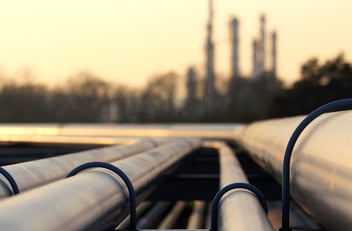Mega Rule and Its Impact
Pipeline safety is a top priority for the Pipeline and Hazardous Materials Safety Administration (PHMSA). In response to the tragic 2010 San Bruno pipeline explosion, PHMSA introduced the Mega Rule, a comprehensive set of regulations aimed at enhancing pipeline safety for a safer future. According to PHMSA statistics, there were, on average, 12 deaths and 58 injuries caused by 29 pipeline incidents annually in all U.S. pipeline systems from 2010 through 2021. The final rule – Gas Transmission 2 Final Rule – applicable to all onshore gas transmission pipelines, including those that transport liquid hydrocarbons, was finalized in August 2022 and made effective May 2023, grants operators until August 2025 to comply with the new requirements.
The Mega Rule comprises of three essential parts:
The following broadly outlines the three essential parts of the Mega Rule. Each part consists of detail requirements as outlined by the EPA for the development of a comprehensive plan (see the EPA plan for more detail).
- Part 1: Threat identification and response: This part requires operators to establish new standards for identifying threats, potential failures, and worst-case scenarios. By conducting comprehensive risk assessments and aligning their operations with the identified risks, operators can proactively reduce the likelihood of accidents and promote a safety-first approach.
- Part 2: Strengthened integrity management requirements: This part focuses on strengthening integrity management requirements. All pipelines, including previously non-regulated lines such as gathering lines, are now subject to the same standards. This expansion ensures that potential threats to pipeline integrity are identified and evaluated, enabling operators to implement effective mitigation measures. Increased reporting requirements and safety regulations further contribute to overall safety enhancement across pipeline construction, maintenance, and repair.
- Part 3: Bolstered corrosion control standards: Corrosion poses a significant threat to pipeline integrity, and Part 3 of the Mega Rule addresses this concern by enhancing corrosion control standards. The rule mandates surveys for corrosion protection interference, internal and external corrosion monitoring, and corrosion protection testing. By implementing these measures, operators can proactively manage corrosion-related risks, preventing potential failures and ensuring the long-term integrity of their pipelines.
Compliance with the Mega Rule is of utmost importance for pipeline operators. Not only does compliance contribute to the overall safety of pipelines, but it also helps prevent accidents, protect public safety, and maintain the integrity of the environment. Non-compliance can have serious consequences, both in terms of regulatory enforcement and public reputation. Here’s an outline of what that might look like.
Regulatory Consequences of Non-compliance:
- Fines and penalties: Non-compliance with the Mega Rule can lead to fines and penalties. The amount of the fine will depend on the severity of the violation.
- Regulatory enforcement actions: PHMSA may take regulatory enforcement actions against non-compliant operators, such as corrective orders or suspension of operations.
- Increased monitoring and auditing: PHMSA may increase its monitoring and auditing of non-compliant operators. This means that operators may be subject to more frequent inspections and audits.
- Damage to public reputation and trust: Non-compliance with the Mega Rule can damage an operator's public reputation and trust. This can make it more difficult for the operator to obtain permits and approvals in the future. And when the Mega Rule is tied to sustainability objectives, non-compliance can also impair an operator’s access to capital.
- Potential legal consequences: Non-compliance with the Mega Rule may also have potential legal consequences. For example, operators may be held liable for damages caused by a pipeline failure that was due to non-compliance.
PHMSA Enforcement Transparency Website lists all enforcement activities, including a range of fines, actions, causes, and more. For instance, in Q1 2023, PHMSA issues an order to a pipeline operator based in Oklahoma City, Oklahoma to correct violations of the Mega Rule related to corrosion control and integrity management. To learn more about the common issues PHMSA takes notice of, visit the PHMSA’s nationwide enforcement activities website here.
The Mega Rule is a significant advancement in pipeline safety. By complying with the Mega Rule, pipeline operators can help to prevent accidents, save lives, and protect the environment. The regulatory consequences of non-compliance can be serious, so it is important for operators to understand their obligations and take steps to comply with the rule.



